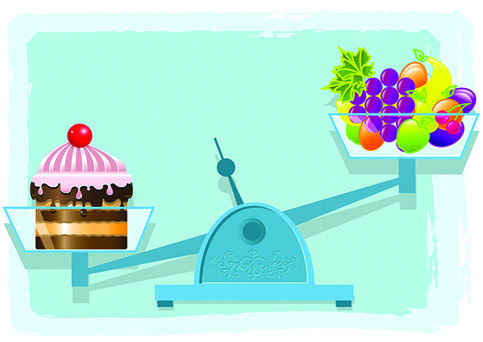 With National Nutrition Month just behind us and the Easter Bunny on the horizon, figuring out how to balance daily nutrition with holiday indulgences can seem overwhelming. But with an obesity rate that has increased over 150 percent for adults – and children – since 1990, re-visiting your children’s Easter basket and egg hunt along with your family’s daily diet and sugar intake has never been more important.
With National Nutrition Month just behind us and the Easter Bunny on the horizon, figuring out how to balance daily nutrition with holiday indulgences can seem overwhelming. But with an obesity rate that has increased over 150 percent for adults – and children – since 1990, re-visiting your children’s Easter basket and egg hunt along with your family’s daily diet and sugar intake has never been more important.
According to United Health Foundation’s America’s Health Rankings 2016 report, more than 27 percent of children and 26 percent of adults are obese in Florida. Statistics show that junk-food consumption is a key contributor to obesity, which is defined for a child as being at least 10 percent higher in weight that what is recommended for their height and body type. While an alarming statistic, it’s also one that can be changed for the better through simple behavioral changes.
A key factor is that less than one percent of all obesity is caused by physical problems; lifestyle-related choices such as poor eating habits, overeating or binge eating can be personally controlled, as well as exercising on a regular basis. Dr. Christine Laramée, medical director for United Healthcare of Central and North Florida, sheds some light on the good, bad and confusing about sugar and recommendations on how to cut back.
Carbohydrates and sugar
In recent years, there have been questions about carbohydrates and sugar as contributing factors to obesity. Low-carbohydrate diets have been touted as the key to weight loss, and some people are even cutting fruit from their diets to reduce their sugar intake. Recent research in the Annals of Internal Medicine indicates we may not need to limit our sugar intake at all. With so much seemingly conflicting information, it is not surprising that rates of obesity and related chronic diseases are rising.
Not all sugar is damaging
Sugar (also called simple carbohydrate) can be categorized into two groups: naturally occurring sugar and added sugar. All carbohydrates we eat are metabolized into glucose, a simple carbohydrate that fuels every cell in our bodies.
Carbohydrates and naturally occurring sugar are found in a variety of foods like dairy products, fruits, vegetables and whole grains. These foods are also packed full of vitamins, minerals, fiber and antioxidants that are good for us and help protect against disease.
Added sugar and where lurks
Most of the added sugar in our diet is usually easy to identify. These include table sugar, honey, syrups, fruit juice and fruit-juice concentrates that are added to certain foods, such as cakes, cookies, ice cream, candy and – surprisingly – store-bought spaghetti sauce, granola bars and breakfast cereals, and drinks, including sodas, juices, energy drinks, sports drinks and lattes. A high intake of added sugar leads to weight gain, obesity and tooth decay.
Acceptable limits
So how much sugar is acceptable? There are no current recommendations for limiting natural sugar found in fruits, vegetables and dairy products. However, the World Health Organization and Dietary Guidelines for Americans recommend adults and children reduce their consumption of added sugar to less than 10 percent of their total daily calorie intake.
Carbohydrates and naturally occurring sugar are found in a variety of foods like dairy products, fruits, vegetables and whole grains. These foods are also packed full of vitamins, minerals, fiber and antioxidants that are good for us and help protect against disease.
Added sugar and where lurks
Most of the added sugar in our diet is usually easy to identify. These include table sugar, honey, syrups, fruit juice and fruit-juice concentrates that are added to certain foods, such as cakes, cookies, ice cream, candy and – surprisingly – store-bought spaghetti sauce, granola bars and breakfast cereals, and drinks, including sodas, juices, energy drinks, sports drinks and lattes. A high intake of added sugar leads to weight gain, obesity and tooth decay.
Acceptable limits
So how much sugar is acceptable? There are no current recommendations for limiting natural sugar found in fruits, vegetables and dairy products. However, the World Health Organization and Dietary Guidelines for Americans recommend adults and children reduce their consumption of added sugar to less than 10 percent of their total daily calorie intake.
Easter Basket re-engineered
In lieu of sugar-based items and lots of candy, think about mixing up the Easter basket and plastic egg contents with different kinds of treats and fun gifts. Suggestions include:
• Sugar-free gum – sour or fruity
• Sugar-free and/or fat-free candy and suckers
• String cheese – it’s fun for kids to pull apart
• Sealed packets of nuts/raisins/pretzels/crackers/small chocolate pieces
• Plastic spiders, jewelry, glow sticks
• Small game items such as Jacks or barrel of monkeys
• Temporary tattoos/stickers
• Small change to start a piggy bank; a great way to reward kids for making healthier choices too!
• Bubbles
• Colored pencils or markers
• Joke books
Dr. Christine Laramée is a board certified family physician headquartered in Tampa, Fla.








